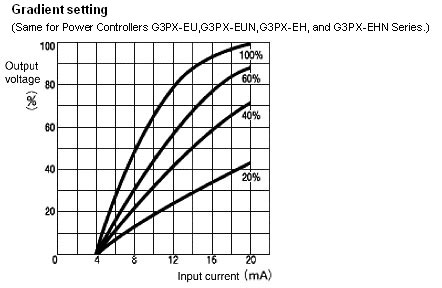What is the gradient setting?
The gradient setting is a function for adjusting the output variation using internal or external variable resistors, as shown in the following diagram. The gradient setting function is separate from the temperature control signals and is used to refine the output amount.
If the internal and external variable resistor controls are used at the same time, the internal variable resistor setting will take precedence.
Example:
If the internal gradient setting is 0%, the external gradient setting can be adjusted only between 0% and 80%.
